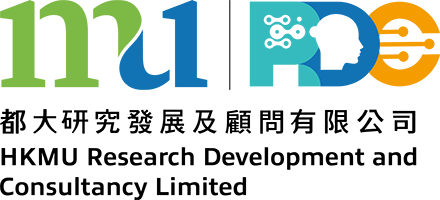LANG A331 Language and Society in Hong Kong is a higher level, 10-credit course developed for Hong Kong Metropolitan University, aimed at giving students of language and translation a wider perspective on how language is used in Hong Kong. Sociolinguistic factors frequently determine the use of language, and it is important to be aware of the complexities underlying certain kinds of language choice. The course identifies and looks at some of the major areas of language use and helps you acquire the analytical tools and background knowledge necessary to understand the development of language issues in Hong Kong society.
Purpose of this Course Guide
If you have completed other Hong Kong Metropolitan University courses, you are well aware of the study skills required for distance learning and are familiar with the organization of HKMU courses. You have probably developed your own approach to and methods of study. Even so, you should read this Course Guide thoroughly before proceeding to look at the study units or your textbooks. Some of the contents will be familiar to you but much of the information is specific to LANG A331 Language and Society in Hong Kong. Please take the time to read it.
The Course Guide tells you briefly about the course content and suggests ways for you to work your way through the material. It also provides some guidelines as to the amount of time you are likely to spend on each unit in order to complete the course successfully.
The Course Guide provides information on assignments, tutorials, and the examination. Please see the Presentation Schedule for information about the due dates for the submission of assignments.
You will probably wish to refer to this Course Guide throughout the course to help clarify important points about studying with HKMU so keep it in a convenient place.
Course aims
LANG A331 Language and Society in Hong Kong sets out to meet the following broad aims:
- to introduce you to the systematic study of language and society, by helping you to understand relevant approaches, methodologies and the terminology of 'sociolinguistics', the study of language and society;
- to increase your awareness of a number of language issues in Hong Kong society, and to provide you with the appropriate tools, theoretical and practical, to describe and analyse such issues; and
- to provide you with an understanding of the ways in which a wide range of social factors impinge on the study and uses of language.
Course learning outcomes
Upon completion of this course, you should be able to:
- Analyse the concept of a 'speech community' and discuss the characteristics of the Hong Kong speech community.
- Identify distinctive sociolinguistic features of Chinese and English as used in Hong Kong.
- Differentiate between code-mixing and code-switching in the Hong Kong setting.
- Discuss gender issues in language with particular reference to Hong Kong.
- Review the history of language planning in Hong Kong and assess its effects.
- Conduct a small-scale research project on language and society in Hong Kong.
About the course
This course involves you thinking, reading and writing about language issues in Hong Kong society. It does this through a survey of research findings on such questions, together with the study of related readings, and a series of activities that are related to key questions in this field. Important themes in the course are:
- multilingualism in Hong Kong society
- linguistic variation
- language contact and mixing
- language planning and language policies.
Course overview
The following table gives a general overview of the course structure.
| Unit | Title | Weeks of work | Assessment activity
(after unit) |
| 1 | The Hong Kong speech community | 4 | |
| 2 | Introduction to Asian sociolinguistics | 4 | |
| 3 | The sociolinguistics of Chinese in Hong Kong | 4 | |
| 4 | The sociolinguistics of English in Hong Kong | 4 | Assignment 1 |
| 5 | Code-switching and code-mixing | 5 | |
| 6 | Language variation | 3 | |
| 7 | Language and gender | 3 | |
| 8 | Language policies and language planning | 4 | Assignment 2 |
| 9 | Revision and research | 6 | |
| | Revision | 3 | Assignment 3–Project |
| | Total | 40 | |











